Contents
Alcovar produces a fairly wide range of moonshine stills, among which there are both successful designs and frankly bad ones. All of them are based on three lines of distillation cubes, we will begin the review with them, and then we will consider the characteristics of the brew columns UBK 50 and UBK 60.
Stills Alcovar
First line
Stills are intended for distillation, volume – 12 and 20 liters, are delivered in usual and compact execution. The tanks have a conical top with a 10 cm opening, a silicone gasket and a 2 mm thick lid. The volume of cubes is determined “on the shoulders”! This is important, as it gives an additional steam zone.
The wall thickness of the cube is 1 mm, the bottom is 1,5 mm. The bottom diameter is 25 cm, the height of the 12 liter cube is 32 cm, the 20 liter cube is 47 cm. The compact version has a diameter of 30 cm, the height of the 12 liter cube is 25 cm, the height of the 20 liter cube is 36 cm. flat bottom, therefore allow any type of heating.
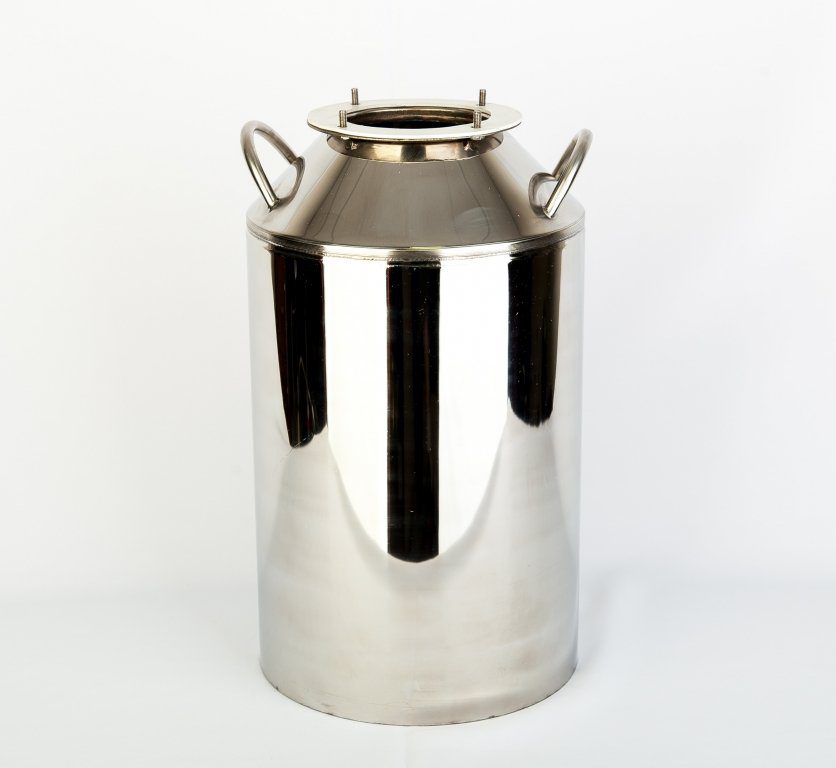

All distillation cubes of the first line are equipped with a bimetallic thermometer of accuracy class 2,5, i.е. indicator located in the steam zone. As a rule, these cubes come with simple Alcovar moonshine stills.
A blast valve, a tap for draining stillage and other “excesses” of the configuration are not provided for them. Everything would be fine, but the neck of the cube is made with a rolling inside. Naturally, it will be very difficult to completely drain the hot bard.
On the whole, the geometric dimensions and proportions of the cubes are quite successful and make it possible to carry out the distillation process in the operating ranges of heating power without uncontrolled foaming. This has a positive effect on the quality of the resulting moonshine.
Second line
Designed for more advanced users, it has volumes of 25, 30 and 50 liters. The bottom diameter is 30 cm, its thickness has been increased to 3 mm, the flange hole has been increased to 11 cm. For convenience, the handles of the cube are made with wooden overlays. The bottom material is AISI 430, while the walls and lid are made of AISI 304.
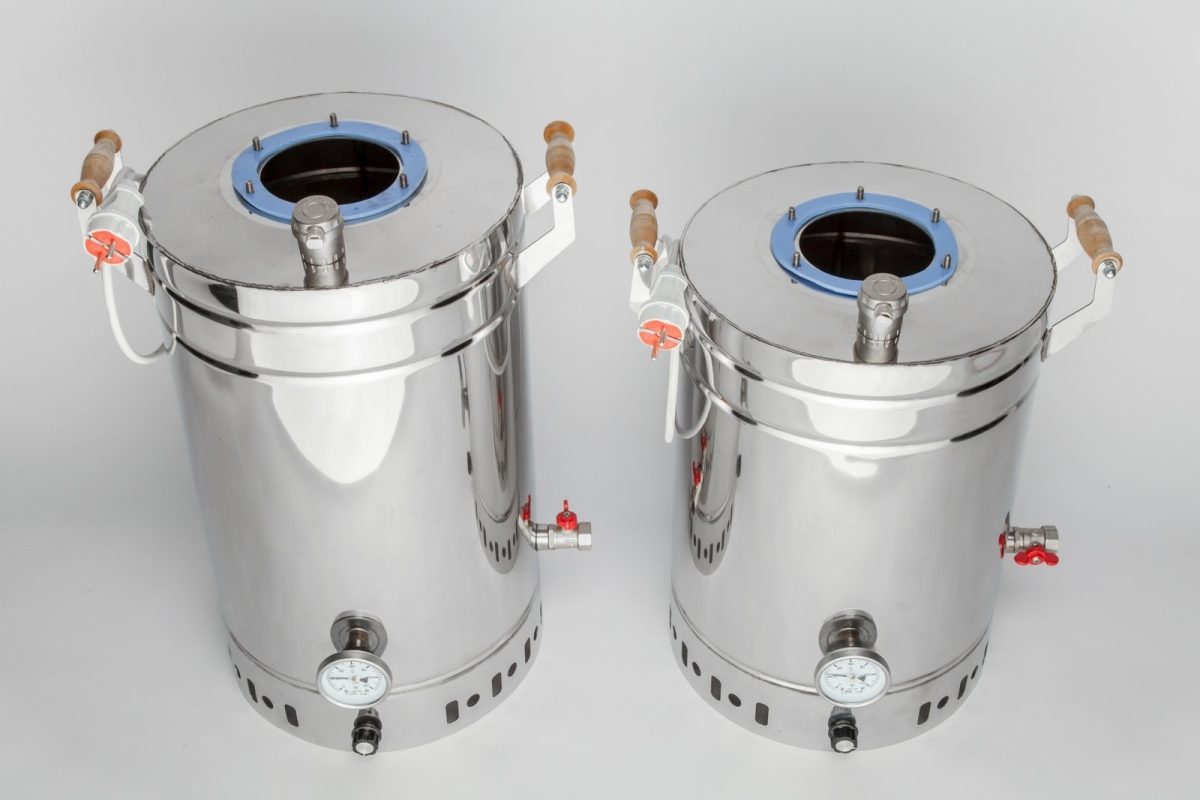

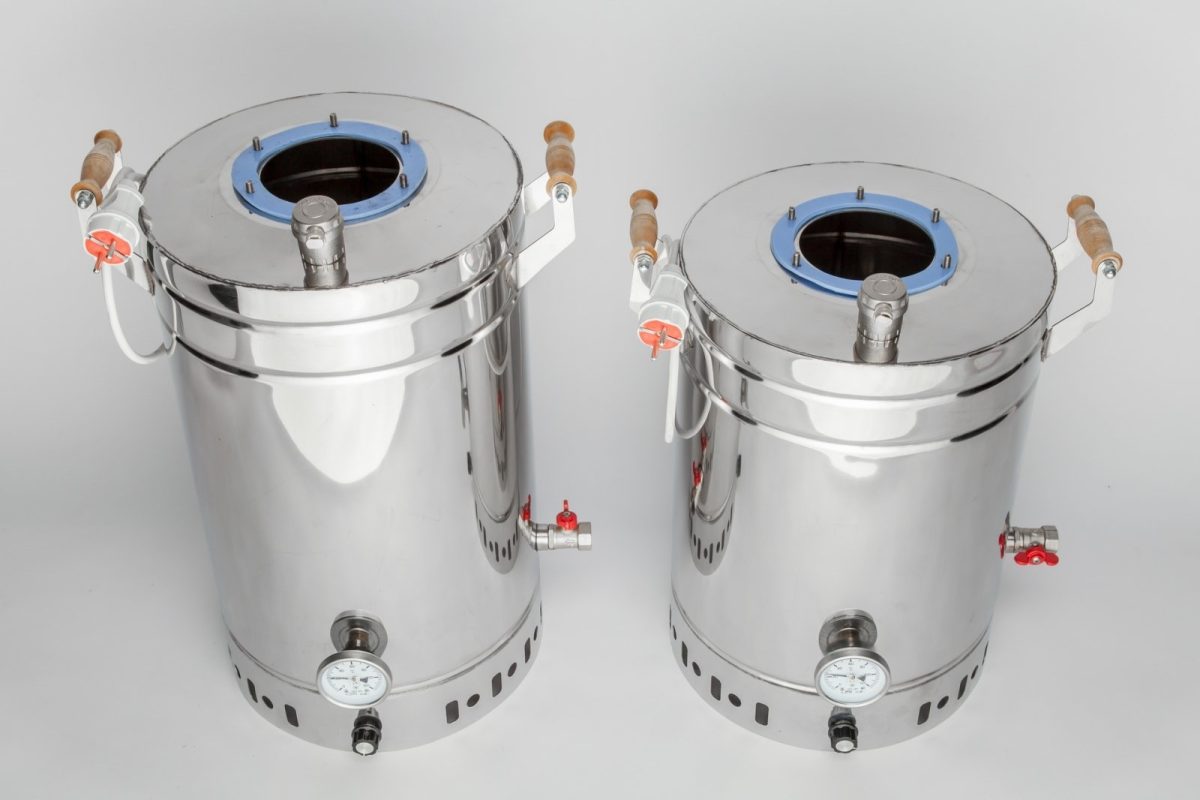

It should be noted well-chosen proportions, dimensions and configuration of cubes of the second line. They are suitable for comfortable work with both classic and strengthening moonshine stills. Given the quite affordable prices, they can be recommended for use, they can even be called one of the best in their class.
The same cubes in 25 and 30 liter versions are produced with a built-in heating element and a dimmer that allows you to smoothly adjust the heating power. Very convenient and not much more expensive. But here also problems begin that need to be solved even before the first use. However, the same shortcomings are also characteristic of the next line of cube models, so we will consider them further.
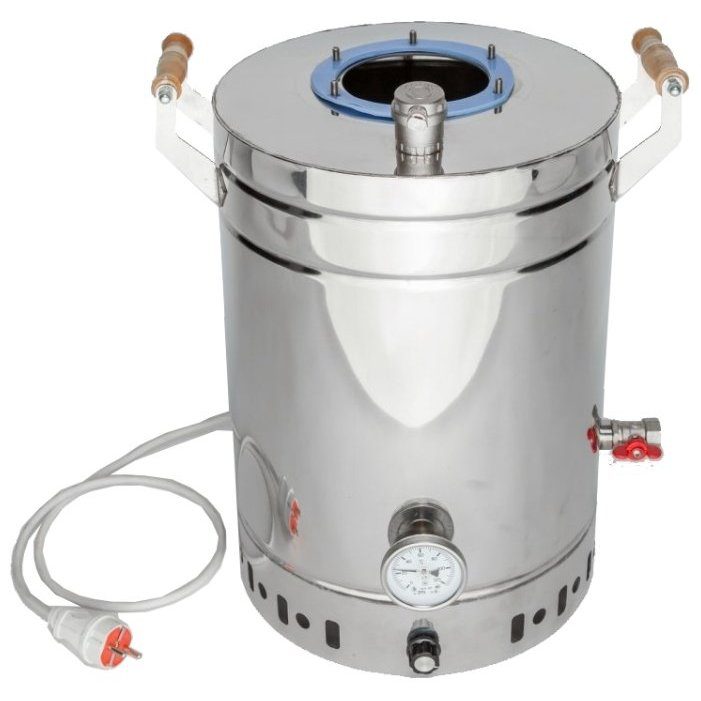

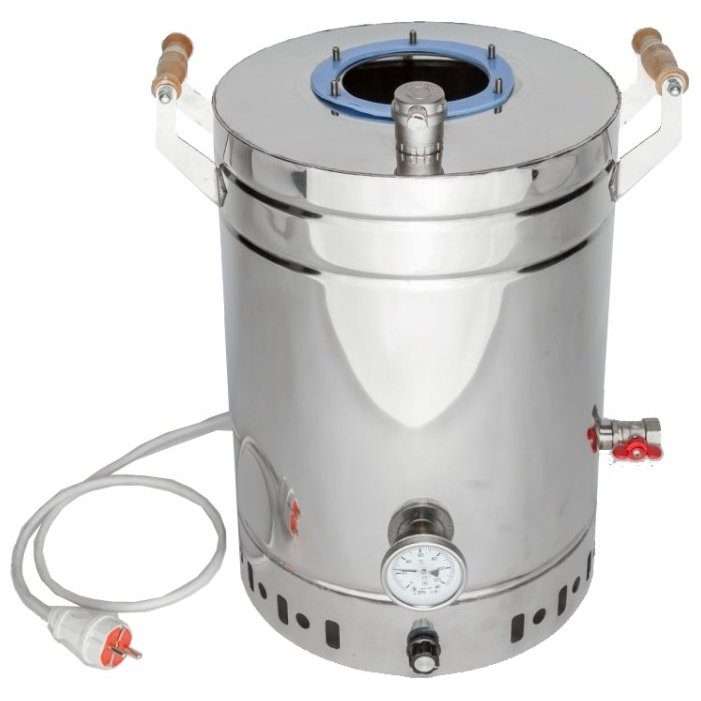

Third line
In fact, it is a modernization of the second. These models were supposed to become the flagship among Alcovar cubes, to provide work with strengthening and distillation columns.
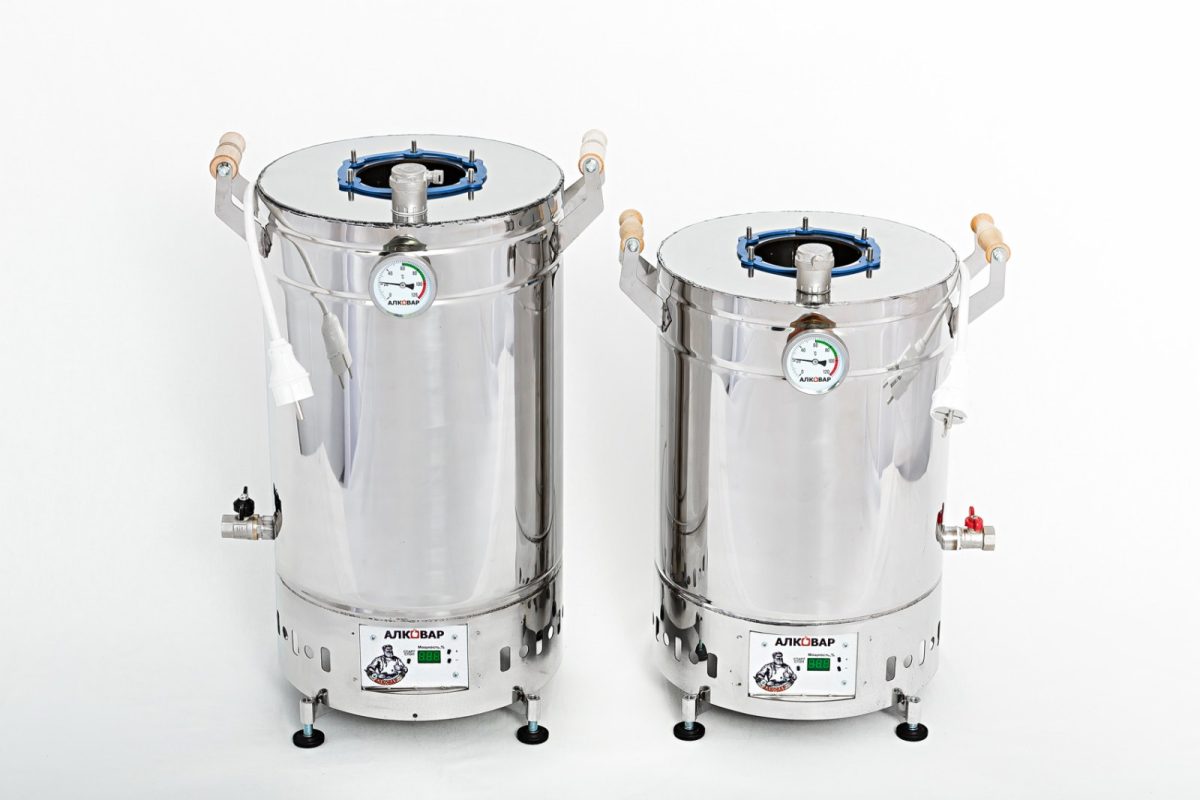

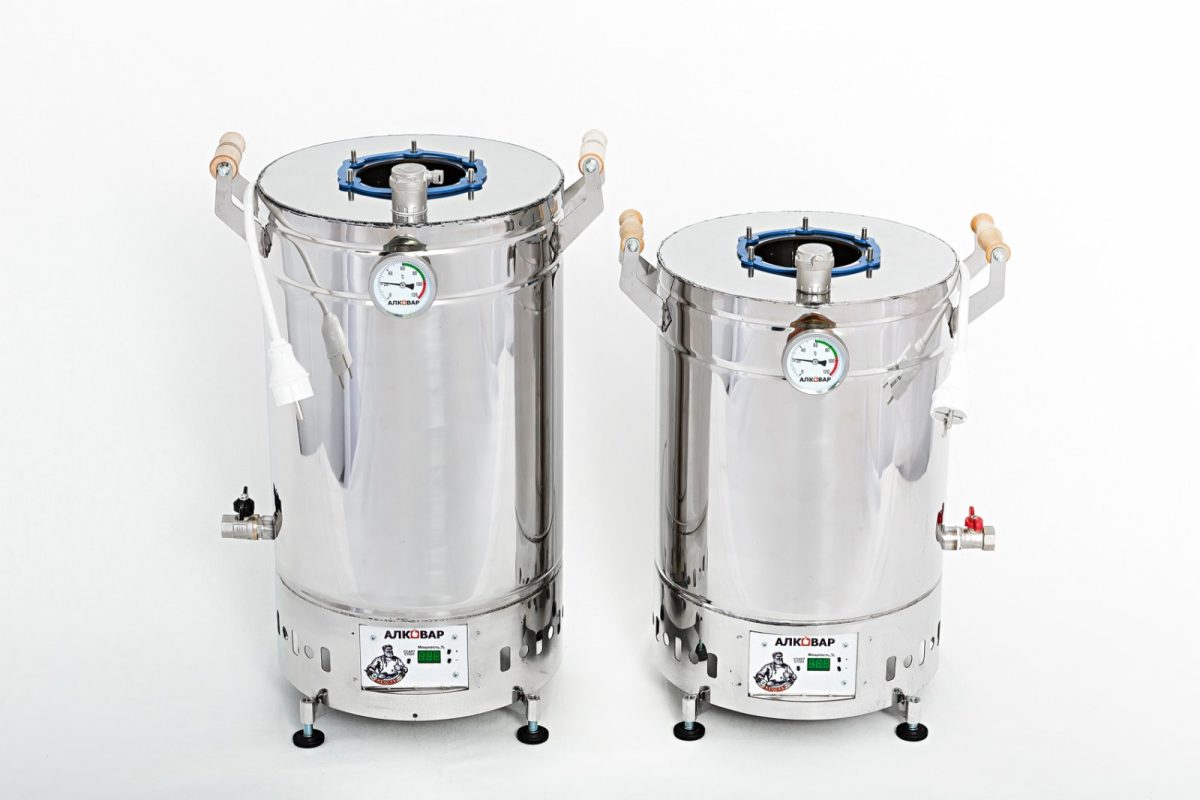

Design changes compared to the second line:
- the thickness of the cover and the upper part of the cube was increased to 3 mm, which significantly increased the rigidity of the structure. The bottom thickness remained the same – 3 mm;
- the thermometer is again moved to the steam zone. Apparently, the designers wanted to diversify the product range, or they were afraid of the influence of the heating element on the accuracy of the readings. Either way, this is a mistake;
- 3 kW heating elements are embedded in cubes. For 25 and 30 liter cubes this is a lot, for 50 liter cubes it is not enough. You need 1,5, 2 and 4 kW. Most likely, the choice was made on the basis of the maximum possibilities of apartment outlets and unification, which was unnecessary in this case;
- instead of a dimmer, an electronic heating power control unit with a digital indication of the percentage of the rated power was installed;
- power regulators do not have an output voltage stabilization unit. This means that they are of little use for ensuring the processes of heat and mass transfer (rectification). An embarrassing shortcoming;
- cubes are equipped with legs adjustable in height, allowing you to set the columns vertically;
- as conceived by the manufacturer, the metal “skirt” closes the contacts of the heating element and automation from dirt and water.
It seems to be nothing bad, but as always, the devil is in the details. It is enough to look inside and the hair will stand on end: not a hint of insulation: the exposed contacts of the heater are waiting for the first puddle to form under the cube. If you do not tighten the fasteners of the heating element in a timely manner, then there will be smudges, this is only a matter of time. And if there is raw alcohol with a strength of 40% in the cube, then trouble can happen … The entire electrical part needs to be reworked for safety purposes.
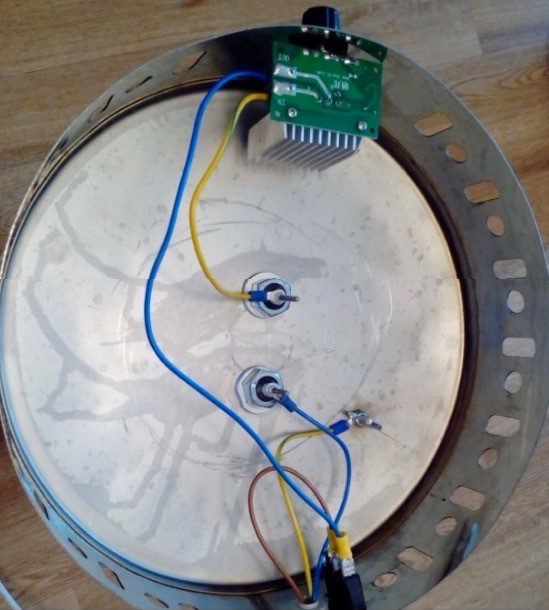

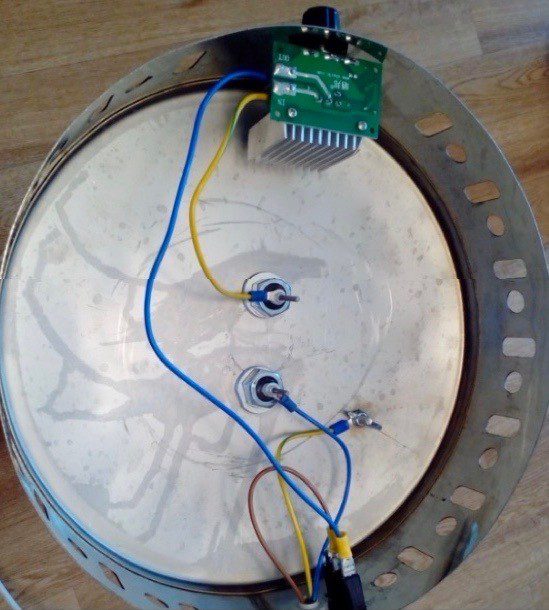

Common Disadvantages of Alcovar Cubes
Speaking about the shortcomings of Alcovar cubes, you should pay attention to the low quality of the seams. We’ll have to work somewhere, removing burrs and sagging. Especially in places where handles are welded, at the beginning and at the end of welds.
Also, users pay attention to the low resistance of the gaskets. After a year of operation, they begin to crack and crumble. This is far from an isolated case, so a spare gasket will not hurt. Another option is to buy a silicone mat, then cut the pads out yourself. Moreover, recently many owners of these cubes have been complaining about the smell of rubber from the new Alcovar gaskets.
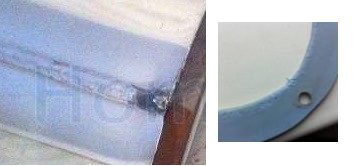

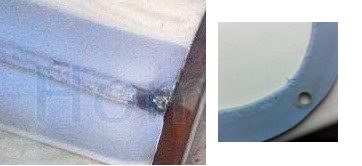

It is worth mentioning the blast valve threshold of 3 Bar. Too high pressure, this is a clear flaw. We’ll have to replace immediately with something closer to real conditions. It seems that the manufacturer began to stir, in 2018 there were cases of filling cubes with normal valves, although at the time of this writing (mid-May 2018) there was no announcement on the official website.
Strengthening mash column UBK 50
The column can be equipped with any of the considered cubes, it consists of a monoblock, which includes a small steam pipe, a jacket-type dephlegmator, a 180-degree turn with a built-in fitting for an electronic thermometer, and a shell-and-tube cooler. The dephlegmator has a length of 20 cm and a shirt diameter of 60 mm.
Refrigerator with a length of 30 cm and a diameter of 50 mm has 4 steam tubes with a diameter of 12 mm inside. According to the manufacturer, the refrigerator has a utilization capacity of 5 kW, is capable of delivering a capacity of up to 6 l / h when distilling mash and up to 3 liters per hour when distilling raw alcohol.
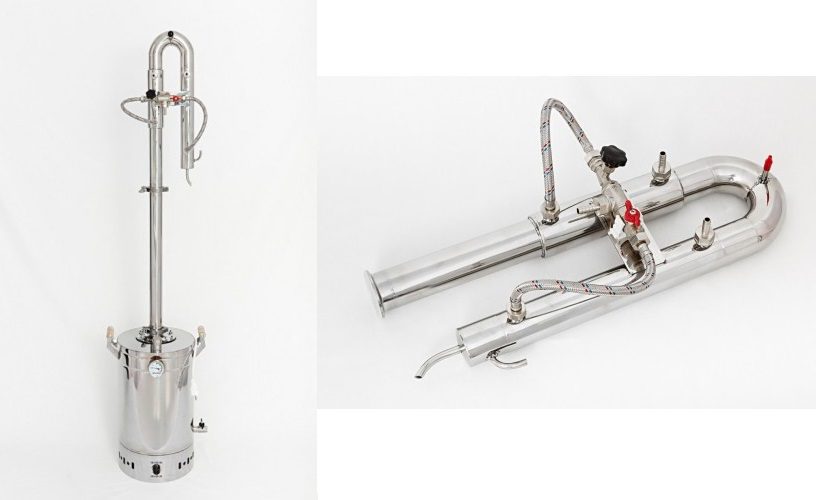

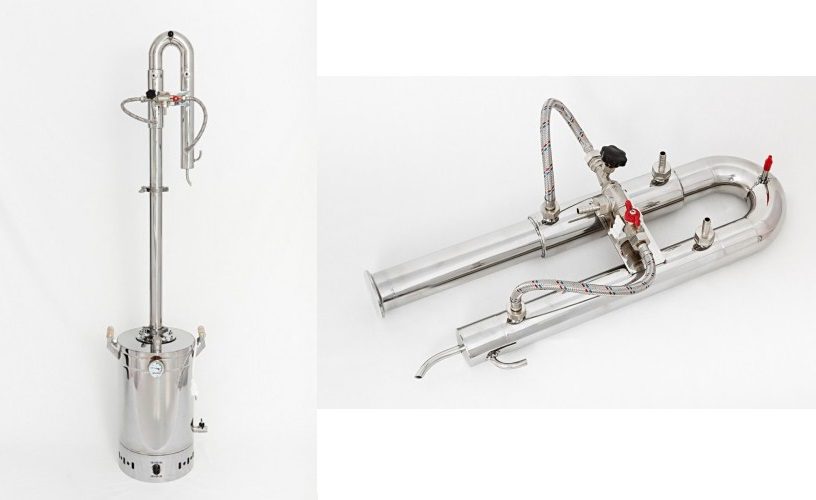

In addition, for distillation with reinforcement, a 50 cm long drawer side and an on-load tap-changer are included. Connections are 2″ clamps. The kit also comes with a flange (cube cover) with an adapter for a clamp.
Is the manufacturer being cunning when talking about technical characteristics? Certainly yes. Even within one page of the site, the table indicates the utilization capacity of 5 kW, and under the table – already 6 kW.
You can calculate for yourself that with such dimensions and normal water consumption, the refrigerator will be able to utilize a little less than 3 kW, which will provide a capacity of about 6 liters per hour when distilling mash.
As for the dephlegmator, the choice of a jacket for a steam pipe with a diameter of 50 mm is completely inappropriate. It is possible to make this column work for itself only at low heating powers – about 600-700 W, taking into account heat losses – about 1 kW.
There can be no talk of any pre-choking mode of operation of the nozzle. Having selected the “heads”, when switching to the selection of the “body”, it will be necessary to increase the power. As a result, the upper intermediate impurities will rush into the selection, and the separation into fractions in the column will be hopelessly violated.
The length of the reflux condenser is only 20 cm completes this sad picture. The heat exchange area is 4,8 * 3,14 * 20 = 301 cm2, and the specific utilization power for a shirt is about 2 W / cm2.
It is obvious that the declared productivity of 3 l / h with a strength of 94% and a high degree of purification is just a publicity stunt. To ensure such a performance, a heating power of the order of 2-2,2 kW is required. The phlegm number due to the low power of the reflux condenser will be no more than 2. You can forget about the high degree of purification and strength above 84-85%. It will not work to get close to alcohol, but it is quite possible to slightly “comb” the distillate from impurities without losing organoleptics.
To control the cooling, a separate water supply unit is provided, which is divided into two streams through a tee. The first flow is regulated by a ball valve and feeds the refrigerator, and the second one, through a needle valve, supplies water to the dephlegmator from below.
The supply of water to the dephlegmator from below contributes to supercooling of the phlegm and sharply reduces the efficiency of the dephlegmator itself. True, due to airing, not everyone manages to make the correct water supply from above. To do this, it is necessary that the design of the reflux condenser allows water to pass through the annular gap of the jacket at a speed of at least 11 cm / s in the operating mode. And if the gap is large, then this is impossible to achieve.
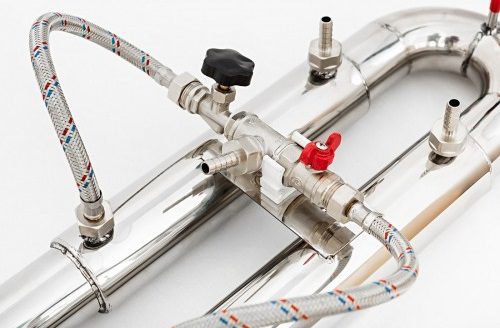

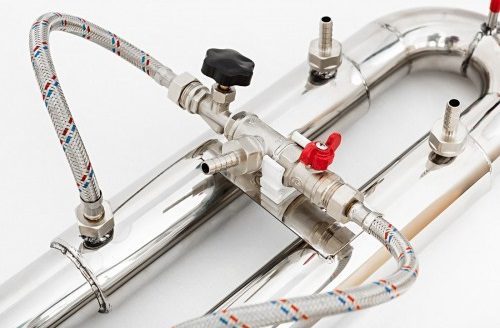

But even when water is supplied from below, it makes sense to put a needle valve at the outlet from above. The fact is that with a pressure drop, degassing occurs, as a result of which a large number of air bubbles are released. This has a bad effect on the controllability of the dephlegmator and its efficiency. If you take a transparent PVC hose, connect it to the water supply and pinch it in the middle with your hand so that the water flow at the outlet is minimal, then this simple experiment will show how many bubbles are released after the pinch point. The same will happen after the needle valve.
An additional drawer 50 cm long with a Panchenkov nozzle allows you to slightly increase the area of heat and mass transfer, increasing the holding capacity of the column. At operating extraction rates that provide a reflux ratio of at least 4, this significantly reduces the amount of fusel oil. The volume of cubic bulk should be limited to 20-23 liters of 40% raw.
If you use a 50 liter cube and a bulk of 38 liters, you need at least one more 50 cm tsarga, otherwise the sivukha will simply have nowhere to hold, and it will go to the selection. If you work according to the modes proposed by the manufacturer, then the content of fusel oil in the selection, at best, can be halved.
The capacity of the jacket is very small, it would be good to use a shell-and-tube reflux condenser or Dimrot for this column. This would make it possible to obtain a really well-purified distillate at maximum productivity.
Strengthening mash column UBK 60
In general, the differences from the UBK 50 are minimal: the same scheme and disadvantages, only slightly increased performance.
UBK 60 has a longer (25 cm) jacketed reflux condenser, and the entire monoblock has grown by 11 cm. The refrigerator was equipped with partitions in a water jacket and increased in diameter to 60 mm, replacing 4 tubes of 12 mm with 7 tubes of 8 mm. This increased the recycling capacity and productivity of the refrigerator by about 15%. Now it easily handles 3,5 kW at nominal water flow. The limit of the refrigerator’s capabilities lies in the range of 4-4,5 kW, but the water consumption will be unrealistically large. The starting capacity of the apparatus during the distillation of mash is about 7-7,5 l / h, and nothing much has changed during the distillation of raw alcohol.
The dephlegmator is still the bottleneck when receiving NDRF (under-rectified), although its controllability and stability have become somewhat higher. When distilling raw alcohol with strengthening, the productivity of UBK 60 can be up to 3-3,5 l/hour. You can’t go higher, otherwise you won’t be able to keep the reflux ratio at level 2, then you can simply throw the nozzle out of the column as unnecessary.
Conclusions on Alcovar mash columns and cubes
UBK 50 and UBK 60 are suitable for beginner distillers who set themselves the task of obtaining grain or fruit distillates for further aging in barrels.
At the same time, UBK 50 and UBK 60 are frankly weak options for those who seek to obtain a high purity distillate or NDRP. These models are not suitable for upgrading to a distillation column. It will not be possible to get pure rectified alcohol on them due to significant design flaws.
Alcovar cubes, although they require improvement, have a suitable volume and functionality. As of May 2018, they are among the best in their price range.
Reviewed by IgorGor.










